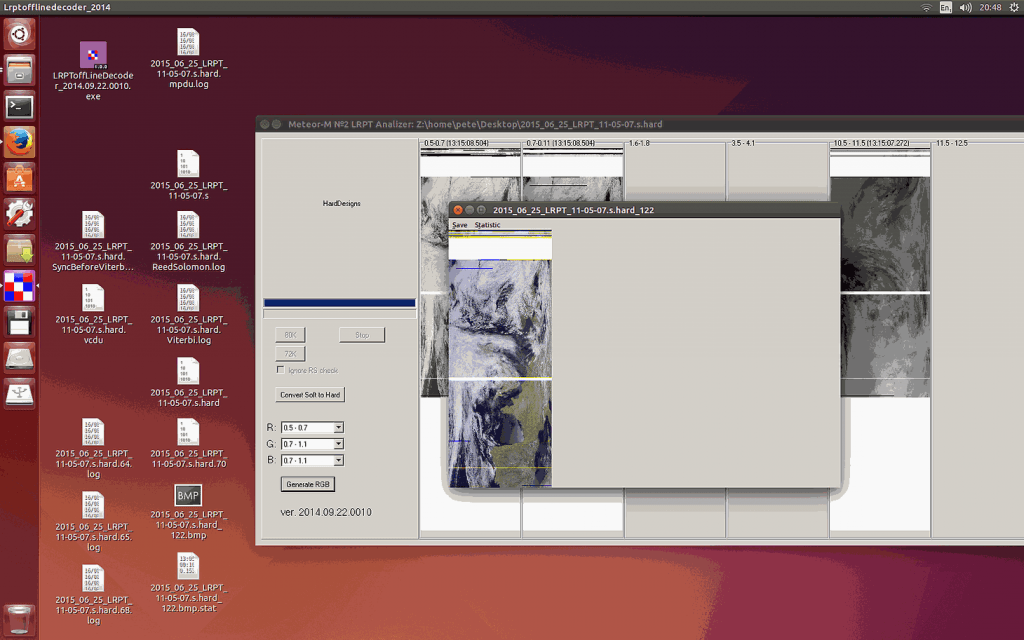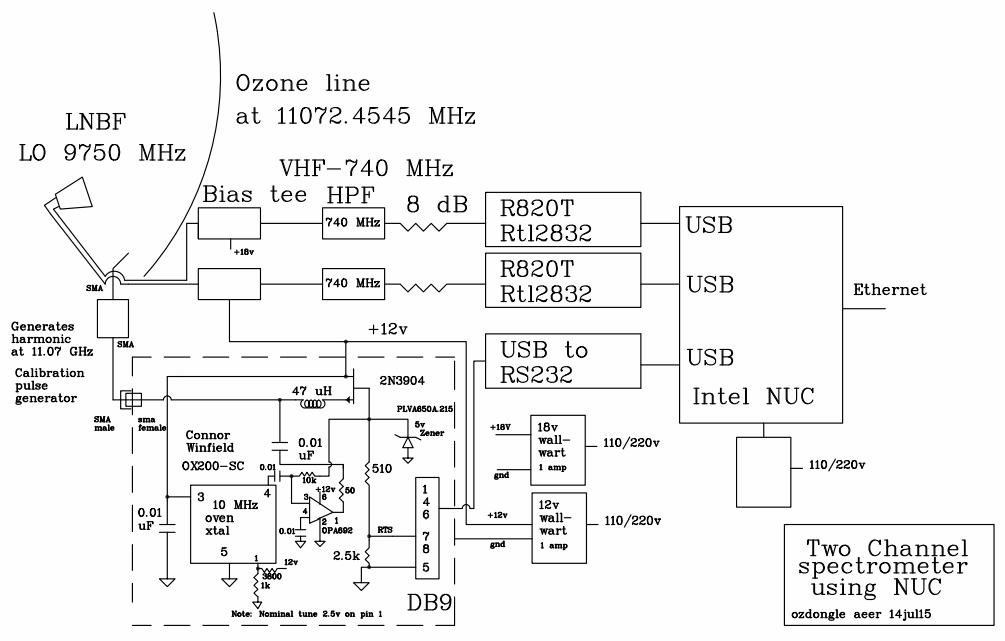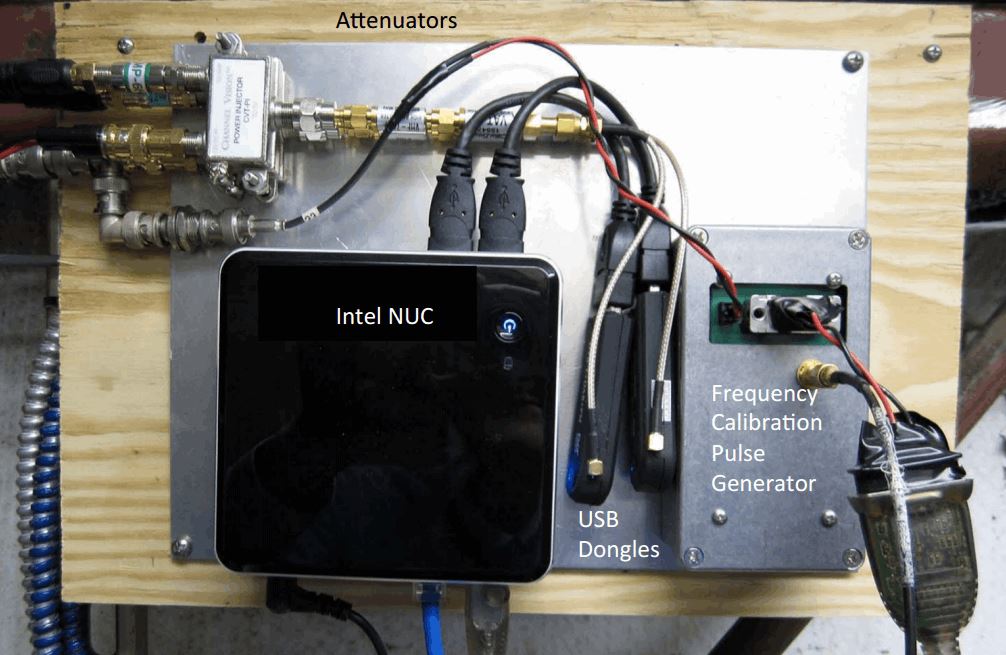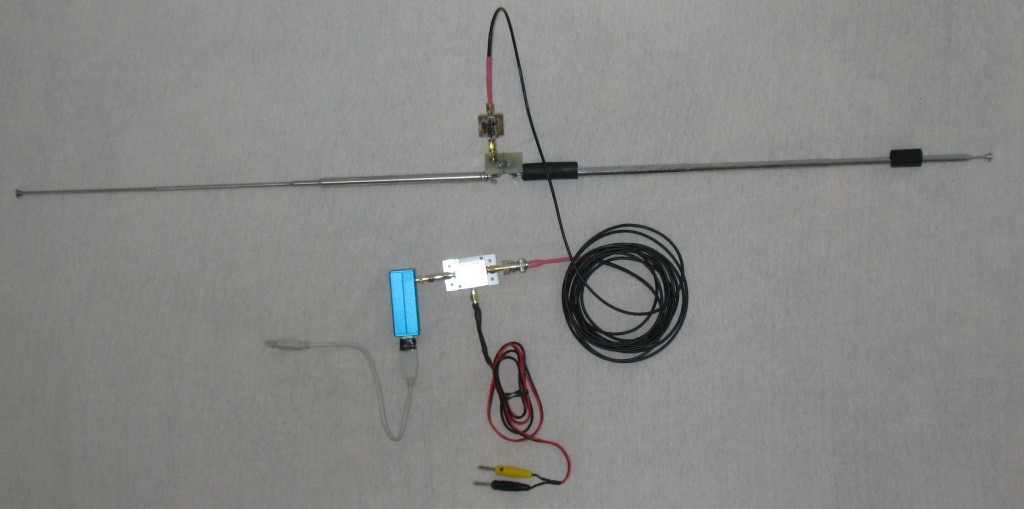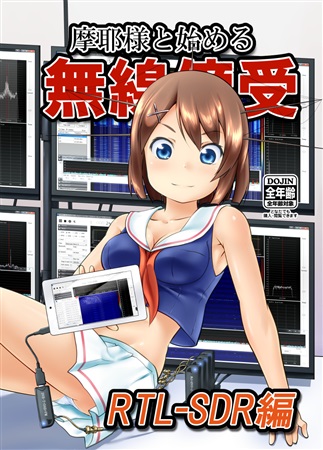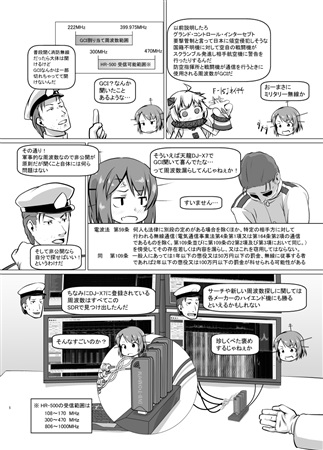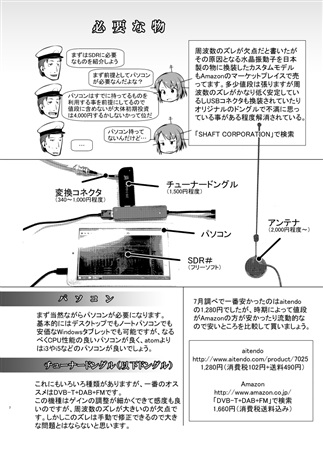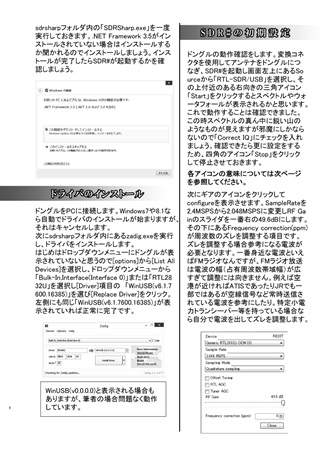RTL-SDR Tutorial: Decoding Inmarsat STD-C EGC Messages
Inmarsat is a communications service provider with several geostationary satellites in orbit. They provide services such as satellite phone communications, broadband internet, and short text and data messaging services. Geostationary means that the satellites are in a fixed position in the sky and do not move. From almost any point on earth at least one Inmarsat satellite should be receivable.
Inmarsat transmits in the L-band at around 1.5 GHz. With an RTL-SDR dongle, a cheap $10 modified GPS antenna or 1-2 LNA's and a patch, dish or helix antenna you can listen to these Inmarsat signals, and in particular decode one channel known as STD-C NCS. This channel is mainly used by vessels at sea and contains Enhanced Group Call (EGC) messages which contain information such as search and rescue (SAR) and coast guard messages as well as news, weather and incident reports. More information about L band reception is available at UHF-Satcoms page. See the end of this post for a tutorial on modifying a GPS antenna for Inmarsat reception.
Some examples of the EGC messages you can receive on the STD-C NCS channel are shown below:
| Military Operations: Live Firing Warning |
STRATOS CSAT 4-AUG-2015 03:21:25 436322 SECURITE FM: RCC NEW ZEALAND 040300 UTC AUG 15 COASTAL NAVIGATION WARNING 151/15 AREA COLVILLE, PLENTY CUVIER ISLAND (REPUNGA ISLAND), BAY OF PLENTY 1. LIVE FIRING 060300 UTC TO 060500 UTC AUG 15 IN DANGER AREA NZM204. ANNUAL NEW ZEALAND NOTICES TO MARINERS NUMBER 5 REFERS. 2. CANCEL THIS MESSAGE 060600 UTC AUG 15 NNNN |
| Armed Robbery / Pirate Warning |
NAVAREA XI WARNING NAVAREA XI 0571/15 SINGAPORE STRAIT. ARMED ROBBERY INFORMATION. 301845Z JUL. 01-04.5N 103-41.8E. FIVE ROBBERS ARMED WITH LONG KNIVES IN A SMALL UNLIT HIGH SPEED BOAT APPROACHED A BULK CARRIER UNDERWAY. ONE OF THE ROBBERS ATTEMPTED TO BOARD THE SHIP USING A HOOK ATTACHED TO A ROPE. ALERT CREW NOTICED THE ROBBER AND RAISED THE ALARM AND CREW RUSHED TO THE LOCATION. HEARING THE ALARM AND SEEING THE CREW ALERTNESS, THE ROBBERS ABORTED THE ATTEMPTED ATTACK AND MOVED AWAY. INCIDENT REPORTED TO VTIS SINGAPORE. ON ARRIVAL AT SINGAPORE WATERS, THE COAST GUARD BOARDED THE SHIP FOR INVESTIGATION. VESSELS REQUESTED TO BE CAUTION ADVISED. |
| Armed Robbery / Pirate Warning |
NAVAREA XI WARNING NAVAREA XI 0553/15 SINGAPORE STRAIT. ROBBERY INFORMATION. 261810Z JUL. 01-03.6N 103-36.7E. DUTY ENGINEER ONBOARD AN UNDERWAY PRODUCT TANKER DISCOVERED THREE ROBBERS IN THE ENGINE ROOM NEAR THE INCINERATOR SPACE. THE ROBBER THEIR BOAT. A SEARCH WAS CARRIED OUT. NO ROBBERS FOUND ON BOARD AND NOTHING REPORTED STOLEN. VTIS SINGAPORE INFORMED. COAST GUARD BOARDED THE TANKER FOR INVESTIGATION UPON ARRIVAL AT SINGAPORE PILOT EASTERN BOARDING AREA.VESSELS REQUESTED TO BE CAUTION ADVISED. CANCEL 0552/15. |
| Submarine Cable Repair Warning |
NAVAREA XI WARNING NAVAREA XI 0569/15 NORTH PACIFIC. SUBMARINE CABLE REPAIRING WORKS BY C/V ILE DE SEIN. 05 TO 20 AUG. IN VICINITY OF LINE BETWEEN A. 21-37.3N 156-11.5W AND 25-03.6N 148-43.2E. CANCEL THIS MSG 21 AUG. |
| Search and Rescue - Missing Vessel |
ON PASSAGE FROM LAE (06-44S 147- 00E) TO FINSCHHAFEN (06-36S 147-51E), MOROBE PROVINCE. VESSEL DEPARTED LAE AT 310500Z JUL 15 FOR FINSCHAFFEN WITH ETA OF 310800Z JUL 15 BUT FAILED TO ARRIVE. ALL VESSELS REQUESTED TO KEEP A SHARP LOOKOUT AND BE PREPARED TO RENDER ASSISTANCE. REPORTS TO THIS STATION OR MRCC PORT MORESBY VIAEMAIL: ******@****.***.**, TELEPHONE +*** *** ****; RCC AUSTRALIA VIA TELEPHONE +*********** INMARSAT THROUGH LES BURUM (POR ***,IOR***), SPECIAL ACCESS CODE (SAC) **, HF DSC ******* NL BURUM LES 204 4-AUG-2015 03:23:14 773980 AMSA_ER 23150928 PAN PAN FM JRCC AUSTRALIA 030858Z AUG 15 INCIDENT 2015/5086 AUS4602 CORAL AND SOLOMON SEAS 23FT WHITE BANANA BOAT WITH BROWN STRIPES, AND A 40HP OUTBOARD AND 5 ADULT MALES IS OVERDUE ON PASSAGE FROM LAE (06-44S 147- 00E) TO FINSCHHAFEN (06-36S 147-51E), MOROBE PROVINCE. VESSEL DEPARTED LAE AT 310500Z JUL 15 FOR FINSCHAFFEN WITH ETA OF 310800Z JUL 15 BUT FAILED TO ARRIVE. ALL VESSELS REQUESTED TO KEEP A SHARP LOOKOUT AND BE PREPARED TO RENDER ASSISTANCE. REPORTS TO THIS STATION OR MRCC PORT MORESBY VIA EMAIL: *******@****.***.**, TELEPHONE +*** *** ****; RCC AUSTRALIA VIA TELEPHONE +************ INMARSAT THROUGH LES BURUM (POR ***,IOR ***), SPECIAL ACCESS CODE (SAC) **, HF DSC *********, EMAIL: ******@****.***.** OR BY FAX +************. NNNN |
| Scientific Research Vessel Drilling - Request for wide clearance |
NL BURUM LES 204 4-AUG-2015 02:29:41 709950 AMSA_ER 23153978 SECURITE FM JRCC AUSTRALIA 040224Z AUG 15 AUSCOAST WARNING 202/15 SPECIAL PURPOSE VESSEL JOIDES RESOLUTION CONDUCTING DRILLING OPERATIONS IN POSITION 28 39.80` S 113 34.60` E 2.5NM CLEARANCE REQUESTED. NNNN |
| Weather Warning |
PAN PAN TROPICAL CYCLONE WARNING / ISSUED FOR THE NORTH OF EQUATOR OF METAREA XI(POR). WARNING 050900. WARNING VALID 060900. TYPHOON WARNING. TYPHOON 1513 SOUDELOR (1513) 930 HPA AT 19.9N 133.2E WEST OF PARECE VERA MOVING WEST 12 KNOTS. POSITION GOOD. MAX WINDS 95 KNOTS NEAR CENTER. RADIUS OF OVER 50 KNOT WINDS 80 MILES. RADIUS OF OVER 30 KNOT WINDS 240 MILES NORTH SEMICIRCLE AND 210 MILES ELSEWHERE. FORECAST POSITION FOR 052100UTC AT 20.1N 130.6E WITH 50 MILES RADIUS OF 70 PERCENT PROBABILITY CIRCLE. 935 HPA, MAX WINDS 90 KNOTS NEAR CENTER. FORECAST POSITION FOR 060900UTC AT 20.8N 128.1E WITH 75 MILES RADIUS OF 70 PERCENT PROBABILITY CIRCLE. 935 HPA, MAX WINDS 90 KNOTS NEAR CENTER. JAPAN METEOROLOGICAL AGENCY.= |
